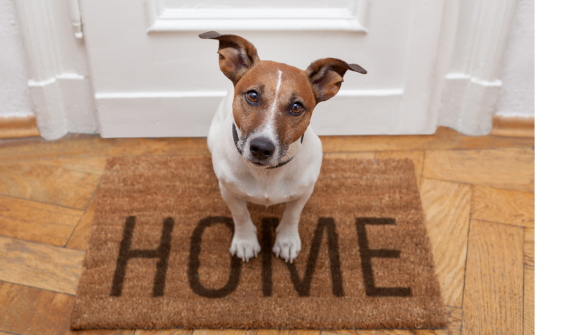Moving with Pets: 10 Tips for Success


Moving can be stressful for people, so just imagine how anxious it can make your pets. They can easily get stressed out when there’s unexpected activity in their home or when they’re introduced to a new environment. I’ve moved with four cats and a fish, and it’s not an easy task. These challenges don’t come with a formula solution, but here are some tips that should make the experience a bit calmer for your beloved companion(s).
Prepare an Overnight Kit

1. Prepare an easily-accessible ‘overnight kit’ that has enough dog food, kitty litter, toys and grooming tools to sustain your pet and keep them comfortable during the first few days of unpacking.
Contact Your Vet

2. If you’re moving out of the area, inform your vet so you can take records and any prescription medications with you. See if they can recommend another vet in your new neighborhood.
Keep Your Pets Away from the Action

3. During the move itself, the best way to reduce stress on an animal is to keep them in the quietest area possible. If you don’t want to leave them with a friend or a kennel for the day (which is recommended), at least remove them from the action. This could mean emptying a bedroom on another floor and closing the door, or putting them in their carrier or kennel in the garage or car (take proper caution to ensure they’ll be at a safe temperature and that they have water and food if they will be there for some time). Make sure you check in on them regularly, and try to feed or walk them at the time you usually would; having some sense of a routine in the midst of all the changes will help a lot.
Take Your Pet in Your Vehicle

4. Take the pet to the new house in your own vehicle. Cats and small dogs can be put in a carrier in the back seat, which can then be secured with a seatbelt. A bigger dog can be moved in a kennel in the back of the car; you may need to put seats down if possible. Some animals feel more comfortable if you throw a blanket over their carrier during the car ride so they can’t see the environment changing outside.
Don’t Let Your Pet Out Until You’ve Arrived

5. Be careful when transporting the animal to your new neighborhood because if they get out they can easily get lost. Once they’re in the car, it’s important to not open the kennel until the pet is in the new home, even if the pet is usually well-behaved or docile. Give them a few days in the new home to adjust. Tip for cat owners: more and more people are keeping their cats indoors for safety reasons, and a move is a good opportunity to get them used to being inside as they won’t be used to being allowed out in the new home. Use this transition to your advantage.
Keep Your Pet Secluded

6. Move the house before you move the pet. Set up as much as you can, even just in a room, before you introduce the animal to the new home. Confine them to a section of the house while they slowly adjust to their surroundings. Give your pet lots of attention and introduce familiar objects like toys or blankets as soon as possible. Make them feel as at home as you do!
Update Their Info

7. After you move, make sure you update their tags or microchip information to the new address and phone number.
Moving with Fish

8. Are you planning on moving with fish? Fish respond strongly to stress and a move can be traumatizing, if not fatal. It isn’t ideal, but you can transport them short distances in bags filled with their old tank water (check with your local aquarium store for supplies and more details). If you have a long distance to travel it’s best to give them a new home with a friend, empty the tank, and buy new fish after you unpack.
Moving with Guinea Pigs

9. Guinea Pigs also are known to suffer from change or being jostled around. Their hearts are particularly susceptible so please take care with guinea pigs and make sure they are transported in a warm, comfortable, small carrier.
Moving with Birds

10. Finally, more than one feathered friend has been known to fly the coop on moving day. Many people proudly announce that their bird has never flown off the shoulder, and sadly regret the complacency. Birds, like most pets, are very jittery about change. So even when the smartest parrot balks at the idea of being put in a cage, please do it on moving day.


